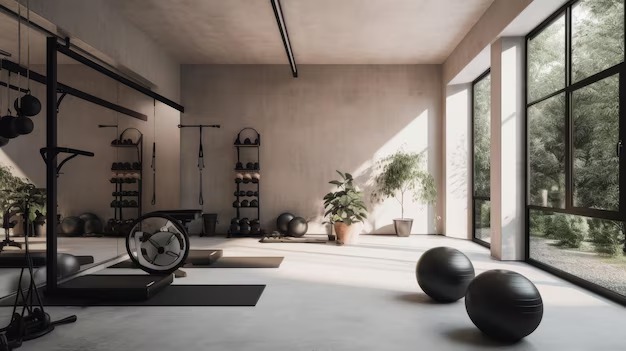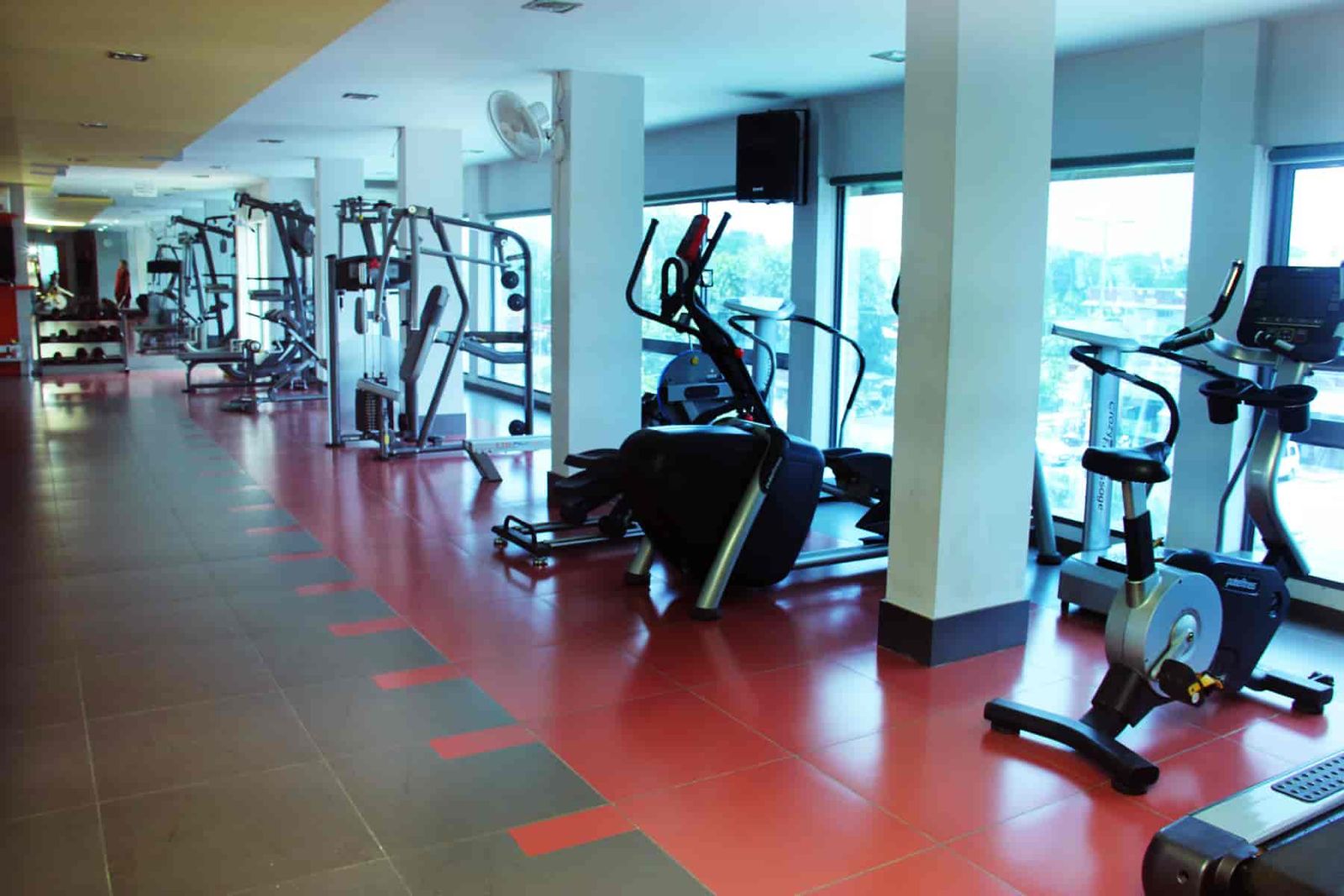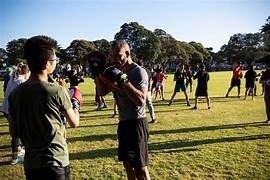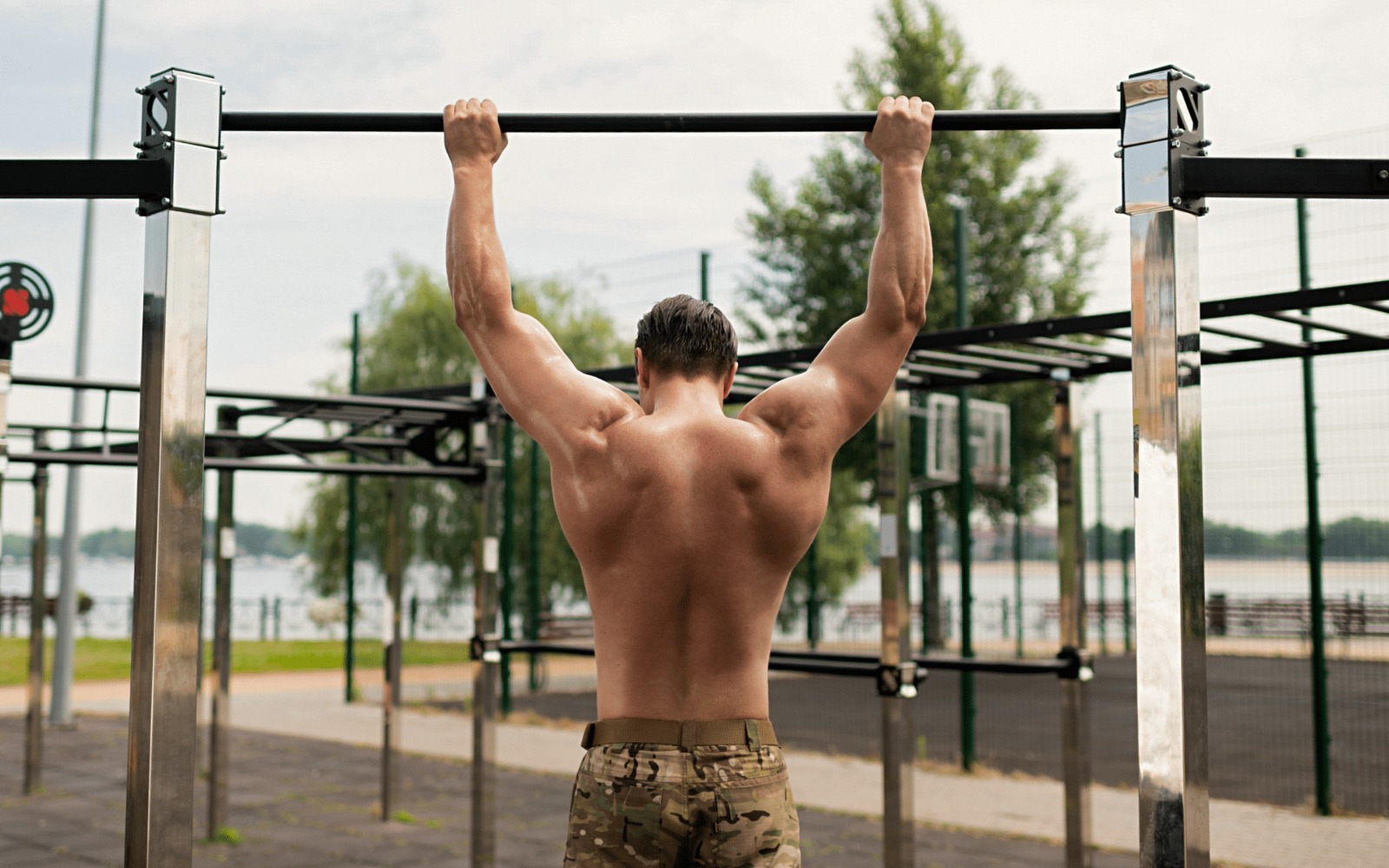
Minimalist Fitness Gear: Do You Really Need a Gym?
In an era dominated by high-tech gyms, expensive equipment, and crowded fitness studios, minimalist fitness challenges the notion that a gym is essential. Focusing on bodyweight exercises, simple versatile tools, and functional movements, this approach emphasizes efficiency, sustainability, and flexibility, proving that strength, endurance, and overall health can be achieved anywhere, anytime, without relying on elaborate machines or memberships.
💪 Fitness Guru
54 min read · 24, Oct 2025

Introduction: The Rise of Minimalist Fitness
Fitness culture has evolved dramatically over the past few decades. From the iron-pumping gyms of the 1980s to today’s boutique fitness studios filled with smart machines, screens, and digital trackers — it seems that fitness has become increasingly tied to equipment and technology. Yet, in recent years, a quiet revolution has emerged — minimalist fitness — a movement that challenges the belief that one needs an expensive gym membership or high-end gear to achieve a healthy, strong body.
Minimalist fitness advocates believe that true strength, flexibility, and endurance can be achieved with minimal equipment, often relying on bodyweight exercises, natural movements, and portable gear. In an age where simplicity and sustainability are becoming priorities, minimalist fitness has become not just a trend, but a lifestyle.
1. What Is Minimalist Fitness?
Minimalist fitness is based on the philosophy of doing more with less. It emphasizes functionality over flashiness, focusing on movements that use your body’s natural resistance, gravity, and core strength. Instead of machines isolating one muscle at a time, minimalist workouts promote compound exercises that engage multiple muscle groups.
Minimalist fitness doesn’t mean no equipment — it means smart, versatile, and compact tools that can be used anywhere. Think of resistance bands, suspension trainers, yoga mats, pull-up bars, kettlebells, or even just a sturdy backpack filled with water bottles.
The goal is freedom: the ability to train anytime, anywhere, without the constraints of a gym or bulky machines.
2. Why the Minimalist Approach Is Gaining Popularity
There are several reasons why minimalist fitness has gained traction in recent years:
- Post-Pandemic Fitness Shift: After COVID-19 lockdowns, people realized they could stay fit at home with little to no equipment.
- Financial Savings: Gym memberships, personal trainers, and specialized equipment can be expensive. Minimalist fitness reduces costs drastically.
- Time Efficiency: Traveling to and from the gym is a major deterrent for many. Minimalist workouts can be done in your living room or a park.
- Environmental Awareness: Minimalist gear is often more sustainable, less wasteful, and longer-lasting than bulky machines.
- Focus on Functionality: It promotes movement patterns that improve balance, mobility, and real-world strength — not just aesthetics.
In essence, minimalist fitness supports a sustainable, practical, and holistic approach to health.
3. The Essential Minimalist Fitness Gear
While you can work out with just your body, a few key items can enhance versatility and challenge. Here’s a list of minimalist gear essentials:
- Resistance Bands: Lightweight, portable, and perfect for strength training or stretching.
- Pull-Up Bar: Can be mounted on a doorway or wall, great for upper body and core.
- Kettlebell: A single kettlebell can replace several gym machines — great for swings, squats, and presses.
- Jump Rope: One of the best tools for cardiovascular endurance and coordination.
- Yoga Mat: Essential for comfort and stability during floor exercises.
- Suspension Trainer (TRX): Allows full-body workouts using your body weight.
- Foam Roller: Helps with muscle recovery and flexibility.
- Gymnastic Rings: For advanced bodyweight training and improving stability.
Each of these tools is affordable, portable, and effective — a true reflection of the minimalist mindset.
4. Bodyweight Training: The Foundation of Minimalism
At the heart of minimalist fitness lies bodyweight training — using your own body as resistance. Classic exercises like push-ups, squats, planks, burpees, and lunges are incredibly effective when done correctly.
Bodyweight exercises not only build muscle and burn fat but also improve mobility, balance, and coordination. For instance:
- Push-ups engage the chest, shoulders, and triceps.
- Squats strengthen the legs, glutes, and core.
- Planks enhance overall core stability.
- Lunges improve balance and coordination.
Bodyweight routines can be scaled easily for beginners or intensified for advanced athletes through variations like one-arm push-ups or pistol squats.
5. The Mental Benefits of Minimalist Fitness
Minimalist fitness isn’t just about physical strength — it nurtures mental clarity and discipline. Simplifying your routine removes distractions, allowing you to focus on mindful movement. It promotes consistency, adaptability, and freedom from dependence on external factors.
When you realize that your body is the best equipment you’ll ever own, it builds self-reliance and confidence. Moreover, outdoor minimalist workouts can reduce stress, boost mood, and reconnect you with nature — something modern gym environments often lack.
6. The Science Behind Efficiency
Studies show that short, high-intensity workouts using bodyweight or minimal equipment can be as effective as longer gym sessions. High-Intensity Interval Training (HIIT), Tabata, and calisthenics leverage short bursts of intense activity followed by rest periods, increasing metabolism and improving cardiovascular health.
Research published in the Journal of Sports Sciences found that minimal-equipment training produced comparable muscle gains and fat loss to traditional resistance training. The key is consistency and intensity, not the type of equipment used.
7. Minimalist Fitness vs. Traditional Gyms
Aspect Minimalist Fitness Traditional Gym Cost One-time investment (affordable) Monthly/annual fees Flexibility Can train anywhere Limited to gym hours Equipment Compact, multipurpose Bulky machines Focus Functional strength Often aesthetic-driven Environment Natural or home-based Indoor, often crowded Sustainability Eco-friendly Energy-intensive Minimalist fitness emphasizes freedom, adaptability, and sustainability — while gyms offer structured environments and variety. The right choice depends on personal preference and goals.
8. Minimalist Workout Examples
Here are two simple, effective minimalist routines that can be done anywhere:
A. Bodyweight Circuit (No Equipment Needed)
- 20 Squats
- 15 Push-ups
- 20 Lunges (10 each leg)
- 30-Second Plank
- 10 Burpees
- Repeat 3–4 rounds with short rest intervals.
B. Minimal Gear Circuit
- 15 Kettlebell Swings
- 10 Pull-ups (or resistance band rows)
- 20 Jump Rope skips
- 10 TRX Rows
- 30-Second Side Planks (each side)
- Repeat 3–5 rounds.
These routines engage all major muscle groups, improve endurance, and take less than 30 minutes.
9. Minimalism and Lifestyle Integration
The beauty of minimalist fitness lies in its seamless integration into daily life. You can sneak in squats while brushing your teeth, do push-ups during TV breaks, or take walking meetings. Fitness becomes a natural part of your routine, not a chore requiring a special place or time.
This philosophy aligns with broader minimalist principles — valuing experiences over possessions, quality over quantity, and intentional living. It’s fitness that fits your lifestyle, not the other way around.
10. The Future of Minimalist Fitness
As urban spaces shrink and remote work expands, minimalist fitness will likely become the default mode of exercise. With growing environmental concerns and economic uncertainties, people are seeking sustainable, low-cost, high-impact fitness solutions.
Technology is also embracing minimalism — with apps guiding bodyweight workouts, AI coaches analyzing movement via phone cameras, and compact gear innovations reducing clutter. The future of fitness is personal, portable, and purposeful.
In the modern world, where fitness culture often seems inseparable from expensive gym memberships, complex machines, and a sea of workout gadgets, a growing number of people are discovering that achieving physical health and strength does not necessarily require these traditional trappings, giving rise to the concept of minimalist fitness, a philosophy that challenges the notion that a fully equipped gym is essential, emphasizing instead that functional strength, endurance, and flexibility can be developed through simplicity, creativity, and consistency, often using little to no equipment; minimalist fitness is based on the principle of doing more with less, focusing on movements that utilize one’s own body weight, natural resistance, and gravity to engage multiple muscle groups simultaneously, rather than relying on machines that isolate individual muscles, thereby promoting compound exercises that improve overall coordination, balance, and functional capacity, which are critical not just for aesthetic purposes, but for real-life physical performance and injury prevention, making it a highly practical approach to health in daily life, and unlike traditional gyms, minimalist fitness is highly adaptable to any environment, from a living room or backyard to a park or even while traveling, removing the barriers of cost, commuting, and time constraints that often deter consistent exercise, particularly in today’s fast-paced and work-intensive lifestyles; this approach has gained significant popularity post-pandemic, when people realized that home workouts, often with nothing more than a yoga mat or a resistance band, were not only possible but highly effective, proving that the human body is inherently capable of remarkable adaptation and strength development when trained intelligently, which is supported by research indicating that high-intensity interval training, calisthenics, and other bodyweight-focused routines can deliver comparable improvements in cardiovascular fitness, muscle strength, and endurance to traditional gym-based resistance training, provided that workouts are consistent and progressively challenging, highlighting the fact that equipment is a convenience, not a necessity, for achieving fitness goals; minimalist fitness often incorporates a small set of versatile tools, such as resistance bands, kettlebells, pull-up bars, jump ropes, suspension trainers like TRX, yoga mats, gymnastic rings, and foam rollers, all of which are portable, affordable, and multipurpose, allowing for a wide range of exercises that target major muscle groups, enhance flexibility, and improve recovery, yet even in their absence, basic bodyweight exercises such as squats, push-ups, lunges, planks, burpees, and dips can be combined creatively to form highly effective routines that challenge strength, endurance, and coordination, demonstrating that the most powerful fitness tool is the body itself, a notion that aligns perfectly with the minimalist philosophy of intentional living, reducing dependency on material possessions while focusing on the essentials that truly matter, including consistency, effort, and mindful engagement with one’s own body, which also brings mental benefits such as improved focus, discipline, self-reliance, and stress reduction, as individuals realize that they are not constrained by machines, gym hours, or space, but are free to train according to their own schedule and environment, fostering a sense of empowerment and autonomy in their fitness journey, while also promoting sustainability by minimizing energy consumption, material waste, and unnecessary purchases associated with modern gyms, which often rely on electricity-intensive machines, plastic equipment, and disposable accessories, making minimalist fitness not only beneficial for the individual but also environmentally conscious; the philosophy encourages creative integration into daily routines, such as performing squats during short breaks, push-ups while watching television, or even incorporating walking and functional movements into commuting and errands, turning physical activity into a natural and habitual part of life rather than a separate, time-consuming task, thereby addressing one of the primary barriers to consistent exercise — the perception that it is inconvenient or requires special conditions, which traditional gym culture often perpetuates; furthermore, minimalist fitness is highly scalable, offering beginner-friendly movements that can be progressed into advanced variations over time, ensuring continual improvement without the need for expensive equipment upgrades or elaborate gym setups, which makes it suitable for individuals of all ages, fitness levels, and lifestyles, and in fact, studies published in sports science journals have demonstrated that minimal-equipment workouts can yield comparable strength gains, fat loss, and cardiovascular improvements to more conventional, machine-based programs, provided that intensity, form, and frequency are maintained, reinforcing that results are primarily driven by consistency and effort rather than the sophistication of equipment, and this realization has significant implications for public health, as it makes fitness accessible to those who may be constrained by economic, spatial, or logistical limitations; in practice, minimalist routines can range from simple bodyweight circuits, such as squats, lunges, push-ups, planks, and burpees repeated in high-intensity intervals, to slightly more advanced setups involving kettlebell swings, resistance band rows, pull-ups, jump rope, and TRX exercises, creating full-body workouts that are time-efficient and highly effective, often taking less than thirty minutes, which further supports adherence in busy lifestyles while still providing substantial health benefits, including improved muscular endurance, cardiovascular fitness, flexibility, balance, coordination, and overall functional capacity; ultimately, minimalist fitness redefines the relationship between health and equipment, proving that commitment, creativity, and consistency are far more important than a fancy gym membership or high-tech machinery, encouraging individuals to prioritize movement, adaptability, and efficiency over material dependence, fostering both physical and mental resilience, and promoting a sustainable, cost-effective, and practical approach to lifelong fitness, while also aligning with broader minimalist values such as simplicity, intentionality, and environmental consciousness, making it not merely a trend but a holistic lifestyle choice that empowers people to take control of their health on their own terms, whether they are seeking strength, endurance, flexibility, or mental clarity, demonstrating that in the realm of physical fitness, less truly can be more.
In today’s fast-paced world, where fitness is often associated with expensive gym memberships, intricate machines, and an array of specialized gadgets, a growing movement is challenging the conventional idea that physical health and strength require elaborate equipment or dedicated gym spaces, and this movement, known as minimalist fitness, emphasizes the principle that functional strength, endurance, and flexibility can be achieved with simplicity, consistency, and creativity, often relying on bodyweight exercises and a few versatile tools rather than expensive or space-consuming machines, and at its core, minimalist fitness is about doing more with less, focusing on compound movements that engage multiple muscle groups simultaneously, such as squats, push-ups, lunges, planks, burpees, and variations thereof, rather than isolating muscles through single-purpose equipment, which not only builds overall strength but also enhances coordination, balance, and mobility, making it practical for real-life activities and reducing the risk of injury, while also fostering mental resilience, self-discipline, and independence from reliance on external tools or environments, a contrast to traditional gyms where aesthetics and specialized machines often overshadow functional fitness; the philosophy has gained significant traction in recent years, particularly after the global pandemic highlighted that effective workouts could be conducted at home or outdoors with minimal equipment, proving that accessibility and flexibility are more important than the size or sophistication of one’s fitness space, and this shift has been further supported by research demonstrating that high-intensity interval training, calisthenics, and other bodyweight-based routines can deliver comparable improvements in cardiovascular fitness, muscular strength, and endurance to traditional gym-based programs when performed consistently and progressively, underscoring that results are driven primarily by effort, intensity, and frequency rather than the type or amount of equipment used, which is a liberating realization for those constrained by time, finances, or space; minimalist fitness does not entirely reject equipment, but it promotes compact, multifunctional, and affordable tools that can expand workout variety without creating dependence, such as resistance bands, kettlebells, suspension trainers like TRX, pull-up bars, yoga mats, gymnastic rings, foam rollers, and jump ropes, all of which are lightweight, portable, and adaptable, enabling users to perform a wide range of exercises anywhere, from a small apartment to a park, and even while traveling, while still allowing progression through increased resistance, repetitions, or exercise complexity, and this approach also supports environmental consciousness, as smaller, long-lasting equipment requires less material, energy, and maintenance compared to large machines, which aligns with a broader minimalist philosophy of intentional living, valuing quality over quantity, and simplifying one’s surroundings while still achieving meaningful outcomes; furthermore, minimalist fitness encourages integration of exercise into daily routines, such as doing squats while brushing teeth, push-ups during short breaks, walking meetings, or functional movements during household chores, transforming physical activity into a natural, habitual, and sustainable part of life rather than a separate, time-consuming task, which addresses one of the primary barriers to adherence in modern society — the perception that exercise is inconvenient, tedious, or requires special conditions, and this philosophy is highly adaptable, providing beginner-friendly options that can be scaled to advanced levels through variations and added resistance, ensuring continual improvement without necessitating constant investment in new equipment or gym memberships, making it accessible and practical for individuals across all ages, fitness levels, and lifestyles, and also offering the mental benefits of improved focus, self-reliance, reduced stress, and a sense of empowerment that comes from recognizing one’s own body as the most effective tool for strength, endurance, and agility, while outdoor minimalist workouts can additionally promote connection with nature, increase mood, and reduce mental fatigue, providing a holistic approach to well-being that traditional indoor gym environments may lack; the versatility of minimalist fitness allows for efficient, high-impact workouts such as bodyweight circuits, resistance band routines, kettlebell swings, pull-ups, suspension training, jump rope intervals, and core stability exercises that can engage all major muscle groups, increase cardiovascular endurance, improve flexibility, and build functional strength in sessions often lasting less than thirty minutes, highlighting the time efficiency of this method in contrast to conventional gym sessions that may require commuting, waiting for equipment, and prolonged duration, which is especially valuable for busy professionals, students, and parents; importantly, the evidence supporting minimalist fitness indicates that it can provide substantial physiological benefits, including muscle hypertrophy, fat loss, enhanced aerobic capacity, joint stability, and improved posture, while also encouraging lifestyle habits such as regular movement, mindfulness in exercise, and prioritization of physical health without reliance on expensive services, thereby democratizing fitness and making it attainable for a wider population, and as urban spaces shrink and people increasingly seek flexible, sustainable routines, minimalist fitness is positioned to become a central pillar of future health culture, particularly when combined with technology, such as fitness apps, online tutorials, AI coaching, and virtual communities, which allow individuals to receive guidance, track progress, and stay motivated without needing a physical gym, reinforcing the idea that effective fitness is about strategy, consistency, and intention rather than material accumulation or technological sophistication; ultimately, minimalist fitness represents a paradigm shift in the way society approaches exercise, redefining strength, endurance, and health as achievable through commitment, functional movement, and intelligent use of the body and minimal tools, emphasizing that fitness should be accessible, adaptable, and sustainable, and proving that individuals can take control of their own physical and mental well-being without dependence on costly memberships or complex equipment, demonstrating that the essence of fitness lies not in machines, gadgets, or flashy trends, but in mastering one’s own body, cultivating resilience, and embracing simplicity, making minimalist fitness not only a practical method of exercise but also a lifestyle philosophy that aligns with the broader principles of intentional, efficient, and environmentally conscious living, ultimately answering the question of whether a gym is necessary with a resounding insight: the only equipment truly required for fitness is dedication, creativity, and the willingness to move your body regularly in purposeful, challenging, and functional ways.
Conclusion
Minimalist fitness proves that you don’t need a gym, fancy equipment, or an expensive trainer to stay in shape. By focusing on functional movement, bodyweight exercises, and compact gear, anyone can build strength, endurance, and flexibility — anywhere, anytime.
The minimalist approach encourages freedom, creativity, and sustainability. It’s about valuing discipline over devices and recognizing that the most powerful fitness tool is your own body.
In conclusion:
You don’t need a gym — you need commitment. Minimalist fitness redefines health by simplifying it, proving that strength doesn’t come from machines, but from mastering your own body and mindset.
Q&A Section
Q1: What is minimalist fitness?
Ans: Minimalist fitness is a training philosophy that focuses on using minimal or no equipment to achieve strength, flexibility, and endurance through functional movements and bodyweight exercises.
Q2: Can minimalist workouts replace gym training?
Ans: Yes, for most people. Bodyweight and minimal-equipment workouts can build comparable strength and fitness to traditional gym routines, especially when done consistently with proper intensity.
Q3: What are the benefits of minimalist fitness?
Ans: It’s cost-effective, portable, time-efficient, eco-friendly, and promotes full-body functional strength. It also supports mental well-being and independence from gym reliance.
Q4: What’s the best minimalist fitness gear to start with?
Ans: Start with resistance bands, a yoga mat, and a pull-up bar. These are versatile, affordable, and suitable for all fitness levels.
Q5: Can beginners follow minimalist fitness?
Ans: Absolutely. Minimalist fitness is adaptable for all levels. Beginners can start with simple bodyweight movements and gradually progress by adding resistance or advanced variations.
Similar Articles
Find more relatable content in similar Articles

Urban Fitness Adventures: Turning Cities into Gyms...
"Discover how urban environmen.. Read More

Minimalist Fitness Gear: Do You Really Need a Gym?..
In an era dominated by high-te.. Read More

Tribal Fitness: Learning from Indigenous Movement Practices...
Long before modern gyms and fi.. Read More

Calisthenics Mastery: Control, Balance, and Body Awareness...
Calisthenics is the art of mas.. Read More
© 2024 Copyrights by rFitness. All Rights Reserved.